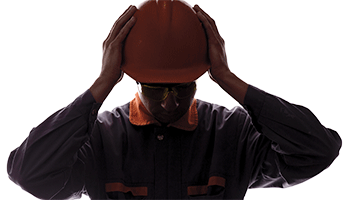After a fatality
The impact ‘never goes away’

Signs of trauma
Employers, supervisors and co-workers need to be aware of the signs of trauma and stress in themselves and others. Acute stress symptoms include chest pain, difficulty breathing, dizziness or shock. Other signs are inability to concentrate, memory problems, difficulties with problem-solving, irritability, anger, fear and distraction.
Ottenstein said signs of trauma or post-traumatic stress disorder also include nightmares, flashbacks and frequent thoughts about the incident.
Although most leaders want their workers taken care of first, Ottenstein said his organization circles back to those leaders to make sure they’re OK as well.
“Afterward, we offer to meet with them to provide support because they take these things pretty hard in most companies,” he said. “And I think it’s really important to offer support to them, including the safety and health professionals.
“What I recommend to the safety professional is to really take advantage of the support that’s available.”
That support can include talking to friends or colleagues. “It’s about not suppressing trauma, not holding it in,” Ottenstein said.
Additionally, remain aware of cumulative stress, which can build from past incidents. “With cumulative stress, we’re fine for maybe a long period of time dealing with traumatic events, but then we reach a point where we’ve had our fill,” Otterstein said. “We don’t always know when that’s going to be.”
‘We’re going to make sure it doesn’t happen again’
A positive response to a tragic incident includes organizational introspection on safety and a desire to make it better.
McClellan’s death involved a metal lathe, so Reynolds Consumer Products commissioned an in-depth review of every machine guard.
“We were not looking merely to meet OSHA minimum standards, but rather to pursue best-in-class solutions,” Clark said. “We found better guards and/or solutions had become available to protect rotating equipment. This has been addressed accordingly at all facilities.”
Among the other changes were the implementation of a risk reduction program that uses the Hierarchy of Controls and the introduction of REAs (roles, expectations and accountabilities) for everyone from the CEO to factory floor workers.
The results, Clark said, are better engagement, a more standardized approach to safety across the organization, lower injury rates and a better understanding of the role each employee plays in safety for the entire company.
“The loss of a team member is immeasurably tragic,” Reynolds Consumer Products CEO Lance Mitchell said. “I took Eric’s death personally, and know it had a major impact on the company as a whole. The experience reshaped our standards for safety and effected change, setting us on our journey for safety excellence. Team member safety is the first thing I think of when I wake up and the last thing I think of when I go to sleep.”
In examining what happened after Stormant’s death, Horne said Potash’s safety team found that problems typically occurred not during dangerous work, but rather during more routine tasks. “We had to have a process where we can look at our routine work differently,” he said.
The company added two pieces to what’s now a three-part SIF prevention program, mainly focused on being more proactive. The organization looked at tasks from start to finish to examine SIF potential and “integrated SIF into every discussion.” For its efforts, Potash won the NSC Green Cross for Safety Excellence Award in 2017.
“When something like this happens, it’s important that there’s some good that comes of this, that we use this as energy to make sure that it never happens again,” Horne said. “We don’t forget, and it is that catalyst that says we’re going to make some good out of this. As bad as the situation is, we’re going to make sure that it doesn’t happen again.”
Post a comment to this article
Safety+Health welcomes comments that promote respectful dialogue. Please stay on topic. Comments that contain personal attacks, profanity or abusive language – or those aggressively promoting products or services – will be removed. We reserve the right to determine which comments violate our comment policy. (Anonymous comments are welcome; merely skip the “name” field in the comment box. An email address is required but will not be included with your comment.)


